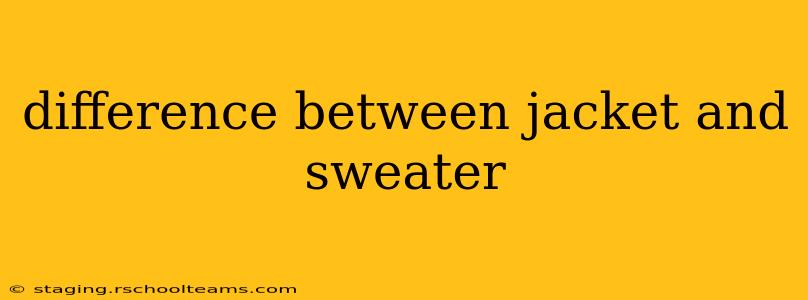Choosing between a jacket and a sweater often comes down to the occasion, weather conditions, and personal style. While both offer warmth and protection, they differ significantly in their construction, materials, and overall purpose. This guide will clarify the distinctions between jackets and sweaters, helping you select the perfect garment for any situation.
What is a Jacket?
A jacket is an outer garment, typically designed for protection from the elements. Key features often include:
- Construction: Jackets are usually made from durable, weather-resistant fabrics such as nylon, polyester, leather, or denim. They often have a structured design with distinct features like collars, zippers, buttons, and pockets.
- Functionality: Jackets prioritize protection from wind, rain, and cold. They can range from lightweight windbreakers to heavy-duty winter parkas.
- Style: Jackets come in a wide variety of styles, including bomber jackets, denim jackets, trench coats, and blazers. These styles often reflect specific fashion trends or purposes.
What is a Sweater?
A sweater is a knitted garment worn primarily for warmth and comfort. Its defining characteristics include:
- Construction: Sweaters are made from yarn, typically wool, cotton, cashmere, or a blend of fibers. They are knitted or crocheted, creating a flexible and often softer texture than jackets.
- Functionality: Sweaters focus on providing insulation and warmth. They are generally less protective against wind and rain than jackets.
- Style: Sweaters offer a diverse range of styles, from cardigans and pullovers to turtlenecks and crew necks. The style often dictates the level of formality or casualness.
What are the Key Differences Between Jackets and Sweaters?
The primary differences between jackets and sweaters lie in their material, construction, and intended purpose. Here's a summary:
| Feature | Jacket | Sweater |
|---|---|---|
| Material | Durable fabrics (nylon, leather, etc.) | Knitted yarn (wool, cotton, etc.) |
| Construction | Structured, often with closures | Knitted or crocheted, flexible |
| Primary Use | Protection from elements | Warmth and comfort |
| Weather | Better for wind, rain, and cold | Best for milder conditions |
| Formality | Can range from casual to formal | Generally more casual |
Are there any overlaps between jackets and sweaters?
Yes, there's some overlap. For instance, some jackets may incorporate knitted elements, and some sweaters might be designed with more weather-resistant outer layers. Think of a fleece jacket—it blends the warmth of a sweater with the structure of a jacket. Similarly, a thick knitted cardigan can offer significant warmth, blurring the lines somewhat.
How do I choose between a jacket and a sweater?
The best choice depends entirely on the context:
- For harsh weather: Choose a jacket, particularly if you need protection from wind and rain.
- For mild weather or indoor warmth: A sweater is often sufficient.
- For formal occasions: A blazer (a type of jacket) is typically more appropriate than a sweater.
- For casual wear: Both jackets and sweaters offer plenty of options.
Ultimately, personal preference plays a significant role. Consider the look you want to achieve, the level of warmth you need, and the weather conditions.
What's the difference between a fleece jacket and a sweater?
A fleece jacket is a type of jacket, typically made from synthetic fleece fabric. While it provides warmth like a sweater, it's more durable and often water-resistant. Sweaters, on the other hand, are primarily made from knitted yarn and offer less protection from the elements. The key distinction is the material and construction: fleece jackets are constructed from a synthetic, often pile-like fabric, whereas sweaters are knitted from yarn.
Can I layer a sweater under a jacket?
Absolutely! Layering a sweater under a jacket is a common and effective way to stay warm in colder weather. The sweater provides insulation, and the jacket offers additional protection from the elements. This is a particularly useful strategy during winter months.
